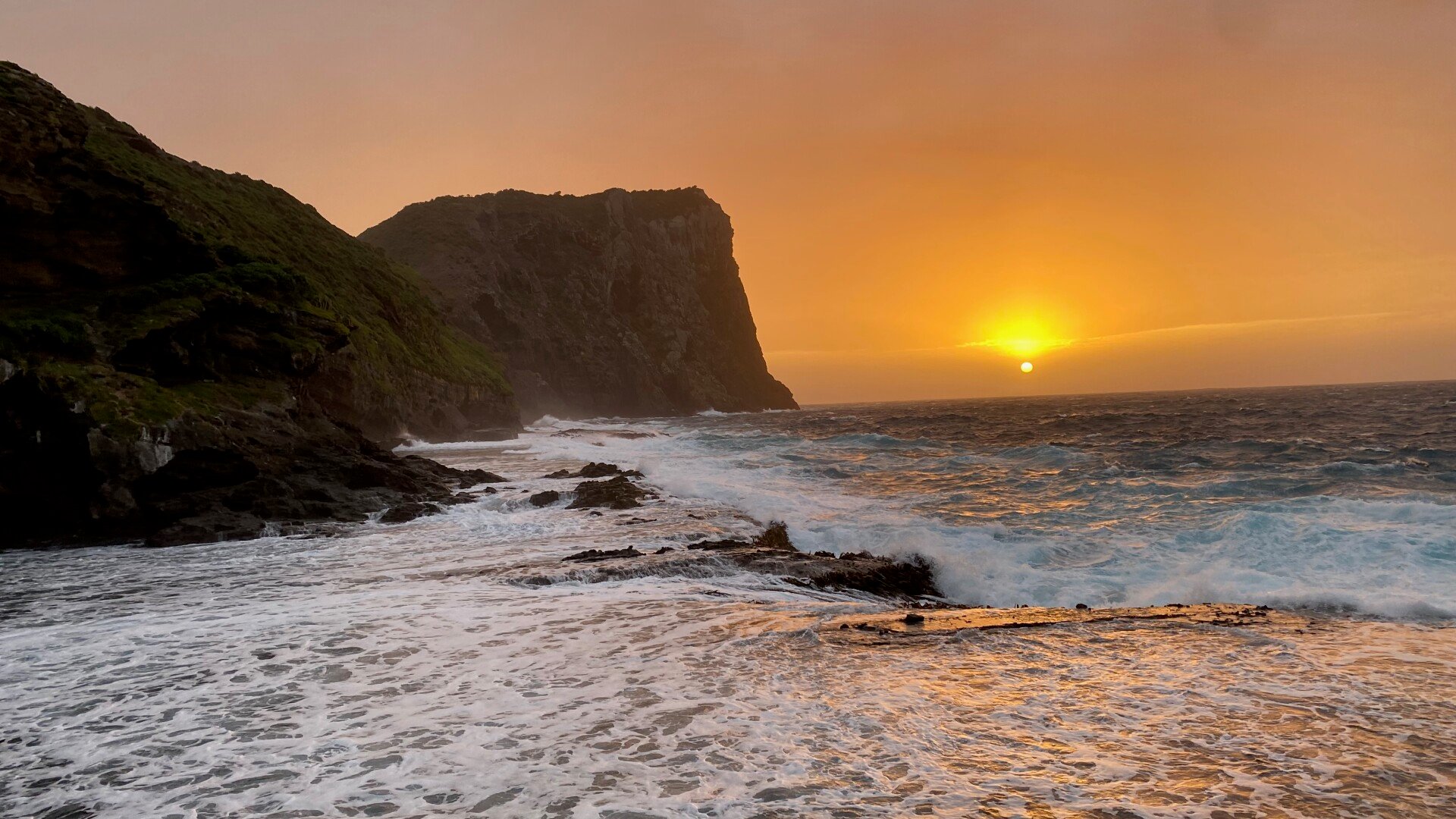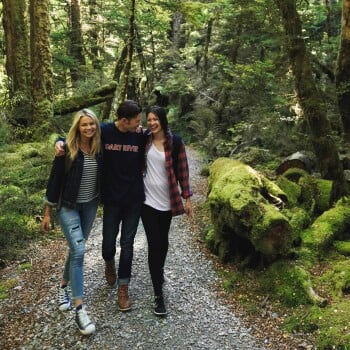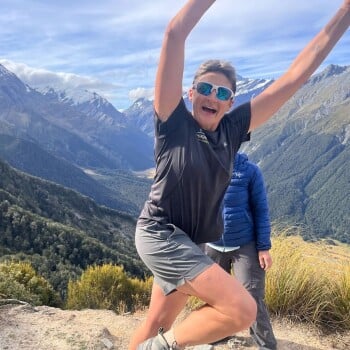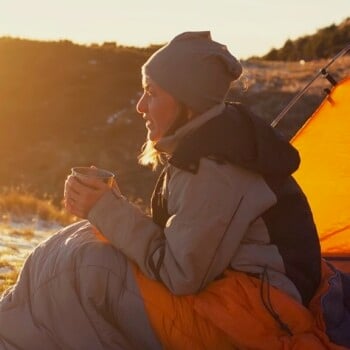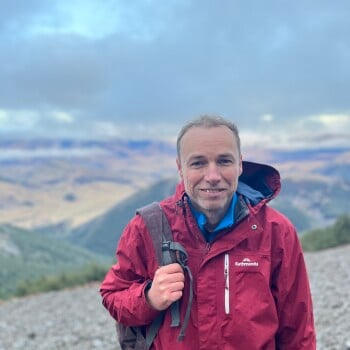- About Us
-
Trips
-
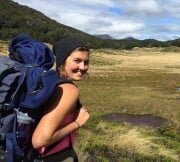 Kiwi-Style Hiking
Kiwi-Style Hiking
-
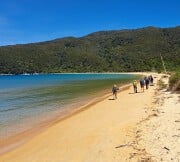 Great Walks
Great Walks
-
 Hiking Tours
Hiking Tours
-
Alpine Hikes
-
Custom Groups
- Huayhuash Trek
- Family Northern Explorer
- Family Southern Explorer
- Lake Waikaremoana Hike
- Women's Custom Tours
- Women's Southern Wilderness
- Coast, Canyons and Mountains
- Coastal Wanderer Custom Tour
- Don't Cross the Ladies
- Secret South Custom Tour
- Tekapo Hike
- West Coast Custom Tour
- World Heritage Custom Tour
-
- Blog
- Shortlist
- About Us
- Trips
- Blog
- Shortlist

Jun 1, 2024
The tiny 131-hectare Mangere Island is a pest-free nature reserve, found just off the Pitt Island coast in the Chatham Islands group, roughly 650km from mainland Aotearoa.
Mangere Island - from sheep farming to wildlife refuge
Mangere was farmed until it was purchased by the government, with help from the Royal Forest and Bird protection Society of New Zealand in 1966. The last sheep were removed by 1968, and revegetation of the then near barren island began with the planting of Chatham Island Akeake and Harakeke in the mid 70s.
Until the 1950s, cats that were introduced to control the rabbit population ran rampant on the island that was home to the Chatham Island black robin (Kakaruia), snipe, bellbird, fernbird and Forbe’s Parakeets. Felines managed to destroy Mangere’s populations of all those species, and the Chatham Island bellbird and fernbird are now extinct.
Miraculously, a small population of black robins survived in a tiny summit forest atop the mostly inhospitable 15-hectare Little Mangare Island. In total, 7 black robins remained, and they were relocated in 1976 by the Forestry Service (now the Department of Conservation or, DOC) to a 10-hectare remnant of mature bush on the Eastern end of Mangere.
It was a rocky start, with the total number dropping to 5, but eventually, the black robin population began to grow, thanks entirely to Old Blue, the only female that could reproduce, and Chatham Island tomtit foster parents. Eventually, some were moved to the nearby nature reserve, Rangatira Island, where today a staggering 265+ black robins call the island home. Surviving Forbe’s Parakeets naturally flew back to Mangere from Little Mangere, Chatham Island snipe were reintroduced, and many seabirds also call the island home.

A chance to ‘lend a hand’
It goes without saying that Mangere is a very special place. When our tree planting foreman (and guide), Oli, and star planter Kerri, were offered the opportunity to plant on the island as volunteers with DOC, they couldn’t wait to get there.
After a 24 hour quarantine during which every last seed was removed from pockets, socks, shoes and bags, fruit and veg inspected and Velcro tweezed, the team of five was ready to go.
An early morning crossing from Owenga on the Southern end of Chatham Island saw decent swell, and the boat was tailed by albatross, cape petrel and terns for the entire journey. The rough seas made for an exciting landing on the rocks whereby the team had to time their jumps from the boat to the rocks with the several metre rise and fall of the waves. Unloading was a dynamic and wet affair as fish bins filled with Akeake and pails of food had to be tossed one by one from the boat.
Adrenaline was pumping once everyone and everything was out of the ocean’s reach, which fuelled the next couple hours of trekking the 400 metre back-and-forth across the rocks carrying all the gear and trees from the landing to the hut.
After a coffee and lunch on the deck, the team explored the island, dying to find the iconic black robin. Oli was also dying to find a snipe. We spent the afternoon in Robin Bush and were collectively lost for words when we found our first robin. Having read the story about them for the first time years ago and finally seeing a species that was once the rarest on earth and had come so close to extinction, was breathtaking.
Oli also found a few snipes and plans to get a snipe tattoo.

Planting native trees and restoring native habitat on Mangere
The following few days were hard work. The trees were to be planted on the Top Plateau, which is the highest point on the island at 292 m. It would take about 45 minutes to hike from the hut with a pack frame full of trees. We’d have to dodge seabird burrows on the trail, squeeze across ‘The Neck’ which connects the North and South ends of the island, battle 30-40 knot winds, then slog up the steep ascent to the top. Then, and only then, could we begin to plant.
We managed to get the trees in, enjoyed a couple spare days at the end to find more Robins, learn to identify and score Forbe’s Parakeet hybrids, and complete a shore plover census.
It was an absolute privilege for our team to contribute to the revegetation of the Black Robin’s home. We’re already looking forward to putting more trees in on Mangere, and are now back on Rēkohu Chatham Island to plant!

